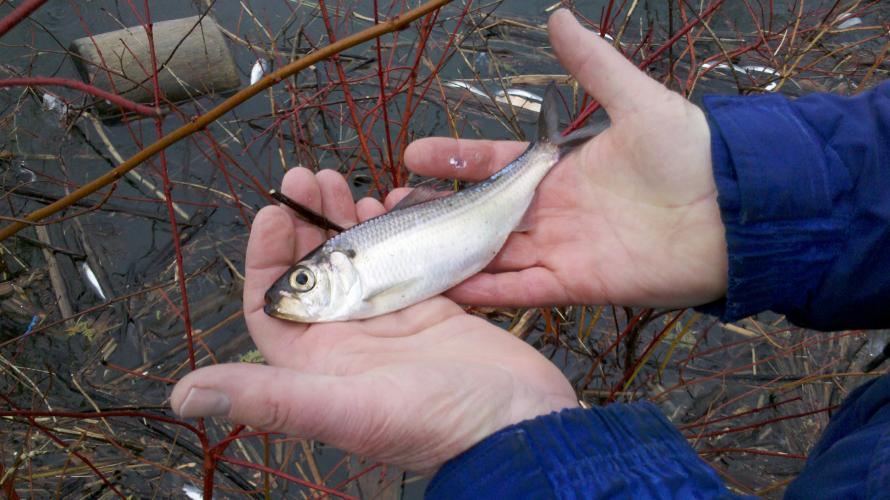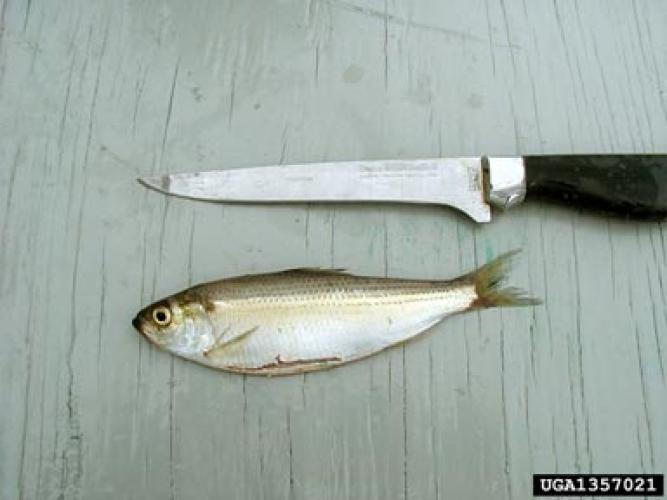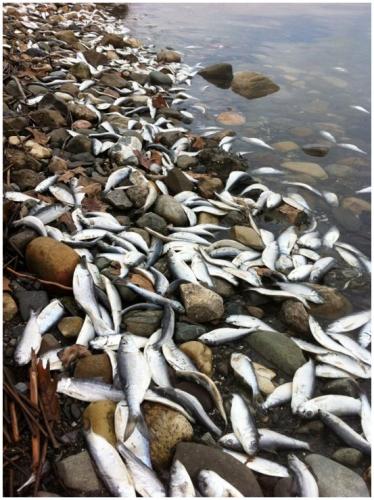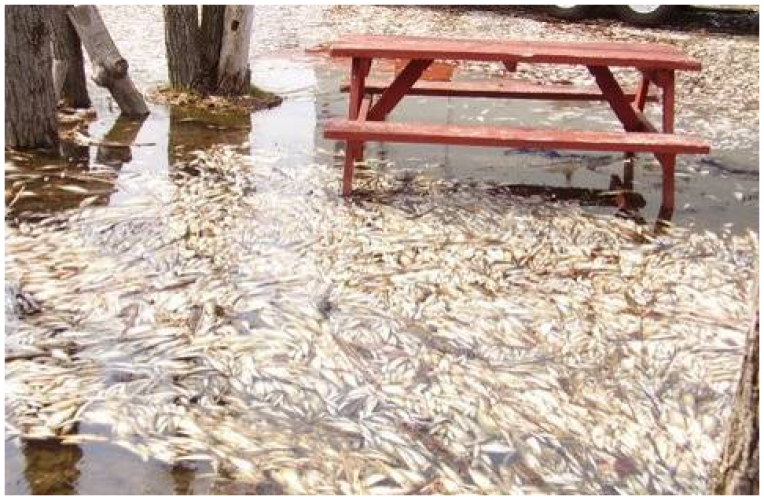Alewife
Identification
Alewives are small members of the herring family with a dark, bluish to greenish dorsal side (top), a lighter colored ventral side (bottom) with darker horizontal stripes. In inland systems they rarely exceed 10 inches in length, with most adults in the 5-8 inch range. Other notable characteristics of this species are a black spot on the upper portion of the back behind the gill cover, and a lower jaw that protrudes past the upper jaw, which gives this species the appearance of having a slight underbite. Also, if you were to run your finger on the underside of an alewife, starting from the tail and working towards the head, you would notice that the belly is serrated.

Biology
Origin
Alewives are native to much of the eastern U.S., and were historically found from the Atlantic coast of Florida to the rivers of eastern Maine. Before their introduction into landlocked systems, all alewife populations in North America were anadromous, meaning they would spend most of their lives in saltwater and migrate into freshwater systems to spawn. Habitat degradation and other factors have threatened alewives in much of their native range, and there are efforts to restore alewives to East Coast rivers where spawning populations are now a fraction of what they once were. Introduced populations of alewives have been deemed invasive in landlocked systems in the East and Midwest, including the Great Lakes.
Habitat
Anadromous alewives are found along the east coast in various ocean depths, but usually are not found in areas exceeding 110 meters in depth. In landlocked systems where alewives can be problematic, they typically form dense schools in pelagic (open water) zones of lakes.
LifeCycle
In systems where they have been introduced, such as the Great Lakes, Lake Champlain and various other systems in the East and Midwest, alewives complete their entire life cycle in fresh water. In native populations on the East Coast, alewives spawn in freshwater but live most of their lives in the ocean, similar to Atlantic salmon.
Vermont Distribution
Alewives are currently present in two Vermont waterbodies: Lake Champlain and Lake St. Catherine (Wells/Poultney).
Outside of Vermont, alewives are found in much of the Midwest, as well as the Atlantic coast where they are indigenous.

How You Can Help
For alewives, the most likely means of spread from one waterbody to another is via transfer of baitfish. Never take bait from one waterbody to another, and follow Vermont's baitfish regulations. You should also take the following steps to ensure you are not unknowingly transporting other invasive pests.
BEFORE MOVING BOATS BETWEEN WATERBODIES:
-
CLEAN off any mud, plants, and animals from boat, trailer, motor and other equipment. Discard removed material in a trash receptacle or on high, dry ground where there is no danger of them washing into any water body.
-
DRAIN all water from boat, boat engine, and other equipment away from the water.
-
DRY anything that comes into contact with the water. Drying boat, trailer, and equipment in the sun for at least five days is recommended. If this is not possible, then rinse your boat, trailer parts, and other equipment with hot, high-pressure water.
Interested in monitoring for aquatic invasives?
- Join the VIPs! Vermont Invasive Patrollers help search for new infestations so we can respond immediately and prevent them from becoming established.
For more information, check out this video from the Vermont Fish and Wildlife Department.
Citations
Fuller, P., E. Maynard, D. Raikow, J. Larson, A. Fusaro, and M. Neilson, 2017, Alosa pseudoharengus (Wilson, 1811): U.S. Geological Survey, Nonindigenous Aquatic Species Database, Gainesville, FL, https://nas.er.usgs.gov/queries/factsheet.aspx?SpeciesID=490, Revision Date: 9/25/2015, Access Date: 8/5/2017



